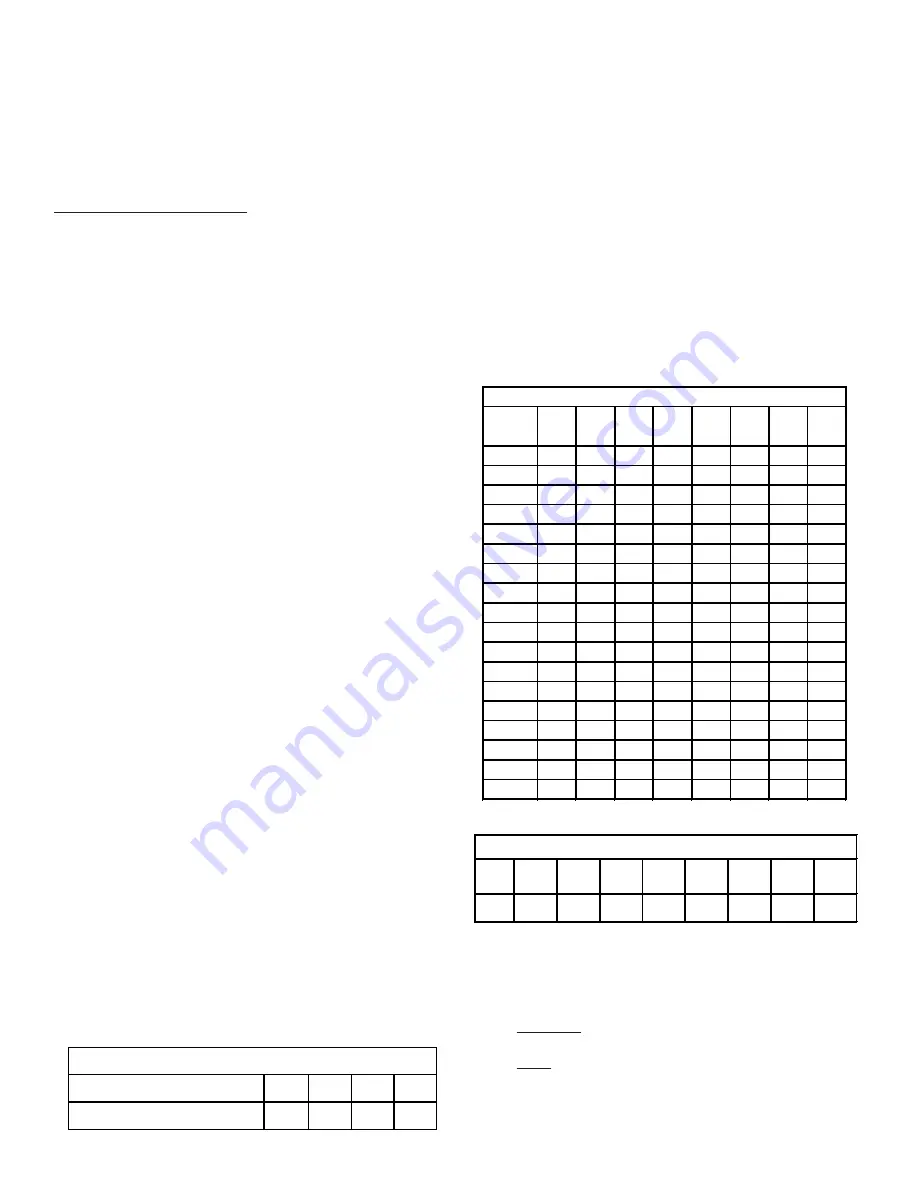
90
SERVICING
4.4
Once the defrost cycle is terminated, the heat pump
commands the air handler/modular blower to end defrost
operation.
4.5
The system returns to heat pump heating operation that was
in effect prior to the defrost cycle.
5.0 Emergency Heat Operation
5.1
The CTK0* thermostat sends a request for emergency heat
to the air handler/modular blower.
5.2
The air handler control energizes the ECM blower motor
at the emergency heat speed. The electric heat sequencer
outputs are also energized, thus energizing the electric
heaters.
5.3
The system operates at emergency heat.
5.4
Once the thermostat demand is satisfied, the CTK0*
thermostat commands the air handler/modular blower
to end emergency heat operation. The air handler control
de-energizes the electric heat sequencer outputs. The ECM
blower motor remains energized until any blower OFF delay
timing has expired. energizes the variable speed ECM motor
at fan demand provided by the thermostat. The fan demand
provided by the thermostat will be 30%, 50%,or 70% of the
air handler’s maximum airflow capability. The continuous
fan demand is set from the thermostat as low, medium, or
high.
S-60 ELECTRIC HEATER (OPTIONAL ITEM)
Optional electric heaters may be added, in the quantities shown
in the specifications section, to provide electric resistance
heating. Under no condition shall more heaters than the quantity
shown be installed.
The low voltage circuit in the air handler is factory wired and
terminates at the location provided for the electric heater(s). A
minimum of field wiring is required to complete the installation.
Other components such as a Heating/Cooling Thermostat and
Outdoor Thermostats are available to complete the installation.
The system CFM can be determined by measuring the static
pressure external to the unit. The installation manual supplied
with the blower coil, or the blower performance table in the
service manual, shows the CFM for the static measured.
Alternately, the system CFM can be determined by operating
the electric heaters and indoor blower WITHOUT having the
compressor in operation. Measure the temperature rise as close
to the blower inlet and outlet as possible.
If other than a 240V power supply is used, refer to the
BTUH
CAPACITY CORRECTION FACTOR
chart below.
BTUH CAPACITY CORRECTION FACTOR
SUPPLY VOLTAGE
250
230
220
208
MULTIPLICATION FACTOR 1.08
.92
.84
.75
EXAMPLE:
Five (5) heaters provide 24.0 KW at the rated
240V. Our actual measured voltage is 220V, and our measured
temperature rise is 42°F. Find the actual CFM:
Answer:
24.0KW, 42°F Rise, 240 V = 1800 CFM from the
TEMPERATURE RISE
chart on the right.
Heating output at 220 V = 24.0KW x 3.413 x .84 = 68.8 MBH.
Actual CFM = 1800 x .84 Corr. Factor = 1400 CFM.
NOTE:
The temperature rise table is for sea level installations.
The temperature rise at a particular KW and CFM will be greater
at high altitudes, while the external static pressure at a particular
CFM will be less.
CFM 3.0
kW
4.8
kW
7.2
kW
9.6
kW
14.4
kW
19.2
kW
24.0
kW
28.8
kW
600
16
25
38
51
-
-
-
-
700
14
22
33
43
-
-
-
-
800
12
19
29
38
57
-
-
-
900
11
17
26
34
51
-
-
-
1000
10
15
23
30
46
-
-
-
1100
9
14
21
27
41
55
-
-
1200
8
13
19
25
38
50
-
-
1300
7
12
18
23
35
46
-
-
1400
7
11
16
22
32
43
54
65
1500
6
10
15
20
30
40
50
60
1600
6
9
14
19
28
38
47
57
1700
6
9
14
18
27
36
44
53
1800
5
8
13
17
25
34
42
50
1900
5
8
12
16
24
32
40
48
2000
5
8
12
15
23
30
38
45
2100
5
7
11
14
22
29
36
43
2200
4
7
11
14
21
27
34
41
2300
4
7
10
13
20
26
33
39
TEMPERATURE RISE (°F) @ 240V
HTR
KW
3.0
KW
4.7
KW
6.0
KW
7.0
KW
9.5
KW
14.2
KW
19.5
KW
21.0
KW
BTUH 10200 16200 20400 23800 32400 48600 66500 71600
ELECTRIC HEATER CAPACITY BTUH
FORMULAS:
Heating Output = KW x 3413 x Corr. Factor
Actual CFM = CFM (from table) x Corr. Factor
BTUH = KW x 3413
BTUH = CFM x 1.08 x Temperature Rise (T)
CFM = KW x 3413
1.08 x T
T = BTUH
CFM x 1.08
















































